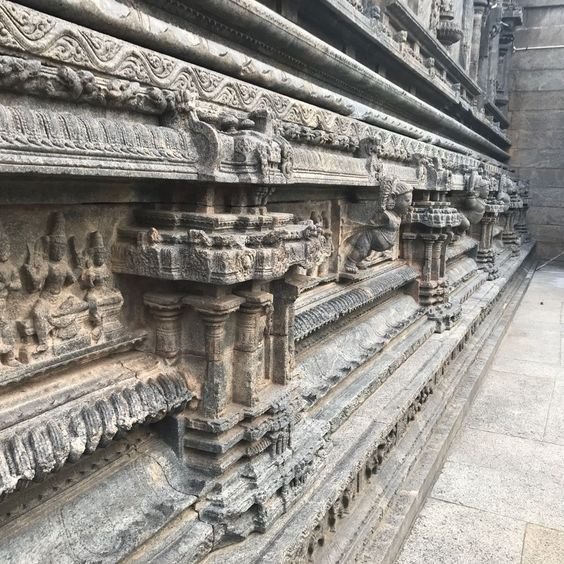Nestled in the heart of a serene town, the Jalakandeswarar Temple stands as a symbol of unwavering devotion and architectural brilliance. This sacred edifice, located in the southern region of India, holds a long history that dates back centuries, attracting pilgrims and history enthusiasts alike. Join us on a spiritual expedition to explore the ethereal beauty and spiritual significance of the Jalakandeswarar Temple.
Historical Significance
The Jalakandeswarar Temple, also known as the Thirumalaikodi Temple, is an ancient Hindu temple dedicated to Lord Shiva. According to local folklore and historical accounts, the temple was constructed during the Chola dynasty, around the 12th century. Its name, “Jalakandeswarar,” is derived from the Tamil words “Jalam” (water) and “Kandu” (to see), symbolizing the divine union of Lord Shiva with the sacred water bodies surrounding the temple.
Architecture and Design
The temple’s architecture is a mesmerizing blend of Dravidian and Pallava styles, showcasing intricate carvings and stunning sculptures that epitomize the brilliance of ancient Indian craftsmanship. The towering gopuram (entrance tower) adorned with sculpted deities, mythical creatures, and celestial beings welcomes visitors with an aura of grandeur and reverence. As one passes through the ornate entrances, they are greeted by a series of pillared halls and sanctums, each radiating spiritual energy.
Sacred Ponds and Rituals
One of the temple’s unique features is the presence of sacred ponds or “theerthams” surrounding the main shrine. Legend has it that the divine rivers Ganga, Yamuna, and Saraswati merge here, imparting divine blessings to all who take a dip in these holy waters. Pilgrims partake in ritualistic ablutions and offer prayers, believing that the waters cleanse their souls and wash away sins.
The temple comes alive during various religious festivals, with Maha Shivaratri being the most prominent. Devotees from far and wide congregate to celebrate the night of Lord Shiva, immersing themselves in devotional songs, dances, and elaborate ceremonies that create an atmosphere of spiritual euphoria.
Spiritual Vibes and Mystical Encounters
Beyond its architectural splendor, the Jalakandeswarar Temple exudes an undeniable aura of spirituality. Many visitors claim to experience a profound sense of peace and connection with the divine while within its sacred precincts. The temple’s ambiance, complemented by the scent of incense and the resonating chants of priests, has a unique ability to soothe the restless minds and instill a sense of devotion and gratitude.
Visiting the temple during the early hours of the morning or at twilight further intensifies the spiritual vibes, allowing visitors to bask in the tranquil moments of solitude and self-reflection.
Preservation Efforts and Modern Challenges
Despite its historical significance and religious importance, the Jalakandeswarar Temple has faced various challenges over the centuries. Conservation efforts by government agencies and local communities have played a crucial role in preserving the temple’s structural integrity and cultural heritage. However, modern-day challenges, such as urbanization and pollution, continue to pose a threat to this ancient gem.
A visit to the Jalakandeswarar Temple is more than just a sightseeing tour; it is a sacred sojourn that evokes a deep spiritual connection with the divine. Surrounded by timeless architecture, mystical rituals, and serene waters, the temple serves as a conduit for seekers to experience a heightened state of consciousness and inner peace.
In a world marked by rapid changes and uncertainties, the Jalakandeswarar Temple stands as a testimony to the enduring power of faith and spirituality. It beckons travelers to embark on a journey of self-discovery and uncover the eternal truths that lie within. So, step into the hallowed grounds of this majestic temple, and let its mystical aura embrace your soul in a divine embrace that transcends time itself.


